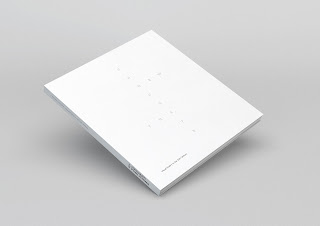a final p.o.w. : perrone, melville, vas dias, herxheimer, jenkins, goussey, fowler & mayer
 |
| poster for p.o.w. series four |
The fourth and final series of p.o.w. broadsides has landed. The project is complete. 26 letters in the alphabet, 26 works. The series also mirrors the original futura series of the 1960s and brings the lives of the legendary and fledging series into one parallel path through the inclusion of work by the editor and creator of futura, Hansjorg Mayer. Fittingly the note to number 26, Mayer's entropy, reads: "The p.o.w. series is inspired by and dedicated to him".
The p.o.w. project doesn't just look backwards but also showcases the strong current state of experimental poetry. Antonio Carvalho has created a series that poets and editors will no doubt look back on as being one of the most exciting publishing ventures in poetry of the decade. The broadsides have now been complied into a boxed edition and as such reads as a kind of new anthology of all that's possible in the language arts.
The first broadside in the new series is Charles A. Perrone's halves and have nots which includes six lines of poetry which might also work as six distinct images - that is, if they weren't bound by the falling repetition of three end-rhymes in the ABC / ABC pattern. Within an impressive use of tight rhythm (there are four stresses to each line) the poem explores the Cartesian limits of thinking in relation to the body. There is an echo of the brilliant Robert Creeley here, particularly Creeley's later poems in which he returned to Herrick for inspiration. This split of the self is suggested in the title of the poem: that we are halved by our desires and as we plunder through the "alphabet soup" of language we are destined to fall short of what it is we think we really want:
 |
| charles a. perrone halves and have nots |
p.o.w. 20 is by nick-e melville and is called me. Before opening the broadside I wonder if this is a confessional moment in the series, an opportunity for the poet to take the large-scale canvas as an opportunity to do what poets are good at: pushing around their emotions and experiences in full-view of the reader? The answer is No. The 'me' of the title is taken from the word 'meme' and cleverly suggests how any notion of the self we have inheres within the cultural genes that are passed on to us. melville begins with a close-up of the letters 'm' and 'e' in 'me' and then uses each panel to slowly reduce the size of the letters until all that is left is a black square. The opening statement of the self - that individual 'me' - is reduced to a black dot amongst many black dots: a bowler hat amongst the swarming crowds of a Mass Observation photograph:
 |
| nick-e melville me |
say we ask the government again to put a stop to this
say the government puts a stop to us
 |
| robert vas dias stalker |
 |
| sophie herxheimer london |
p.o.w. 23 is called flagstall in blue yonder and is by Philip Jenkins. The poem takes us into the realm of the extended personal lyric. There are some tremendous lines of poetry here, including:
better you explain in another language
one accessing shipping forecasts
The poem recalls Perrone's exploration of identity and - fittingly for this series - transforms the poet himself into a piece of mailart: "seventeen / separate parcels delivered by post". Jenkins' biography on the broadside cryptically talks of being a child and being given "a small flag" to wave at a passing car containing the Queen and Prince Phillip. His broadside is no small flag and might be read as exploring the poet's true self in response to state occasions - a self in which he "stole / almost every book [he] could".
 |
| phillip jenkins flagstall in blue yonder |
 |
| roel goussey tombeau |
The penultimate p.o.w. takes us directly into the heart of visual language and does so through a challenging emotive language. vikings by s.j. fowler is an anachronistic Anglo-Saxon poem spelt out through runic images. Fowler uses his biographical note to tell us that "he is of viking heritage, and his middle name is Bjorn, which means bear". The poems drives through an end-of-the-world landscape describing a violent love encounter with a woman called Erika. The poet captures the savagery of the viking death desire, as if language is the container in which all the offshoots of their hand-to-mouth struggles was captured in. This landscape of movement, uncertainty, lust and danger is propelled forwards through the compounded, a-syntactic language and the shifts in font type and size. The poem, it could be argued, represents a fierce and honest struggle with the self, although it concludes quite beautifully : "I shine only for you, dove / it's / time to introduce / my distant pres- / ent past into / the pres- / ent".
 |
| s.j. fowler vikings |
 |
| hansjorg mayer entropy |
 |
| p.o.w. complete series |
 |
| close-up of a selection of p.o.w. broadsides |
 |
| all 26 p.o.w. broadsides |
Review of p.o.w. series one on Poems for Sale here
Review of p.o.w. series two on Poems for Sale here
review of p.o.w. series three on Poems for Sale here
p.o.w. series 4 are available for £5 each p+p or £30 for the set of eight. The whole series of 26 broadsides + 4 posters is available as a limited edition boxed edition for £75. To buy email: poetry@unit4art.com or contact: studiobookshop@btconnect.com



Comments